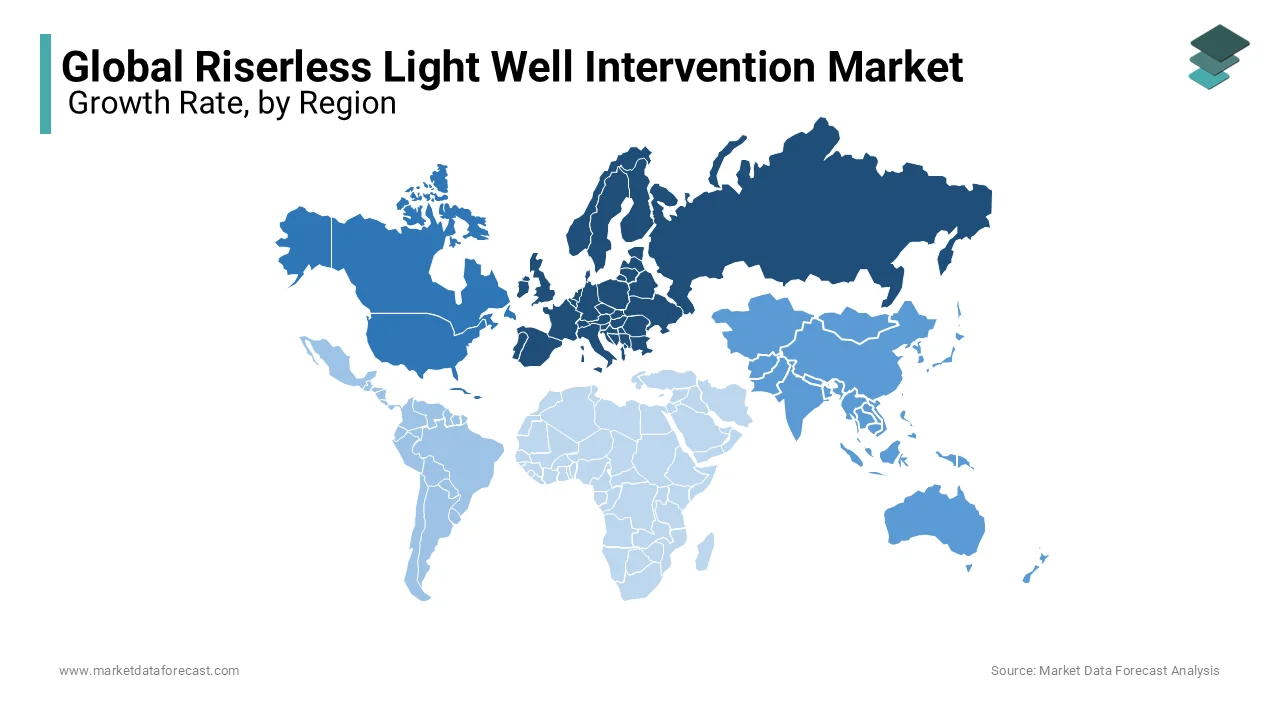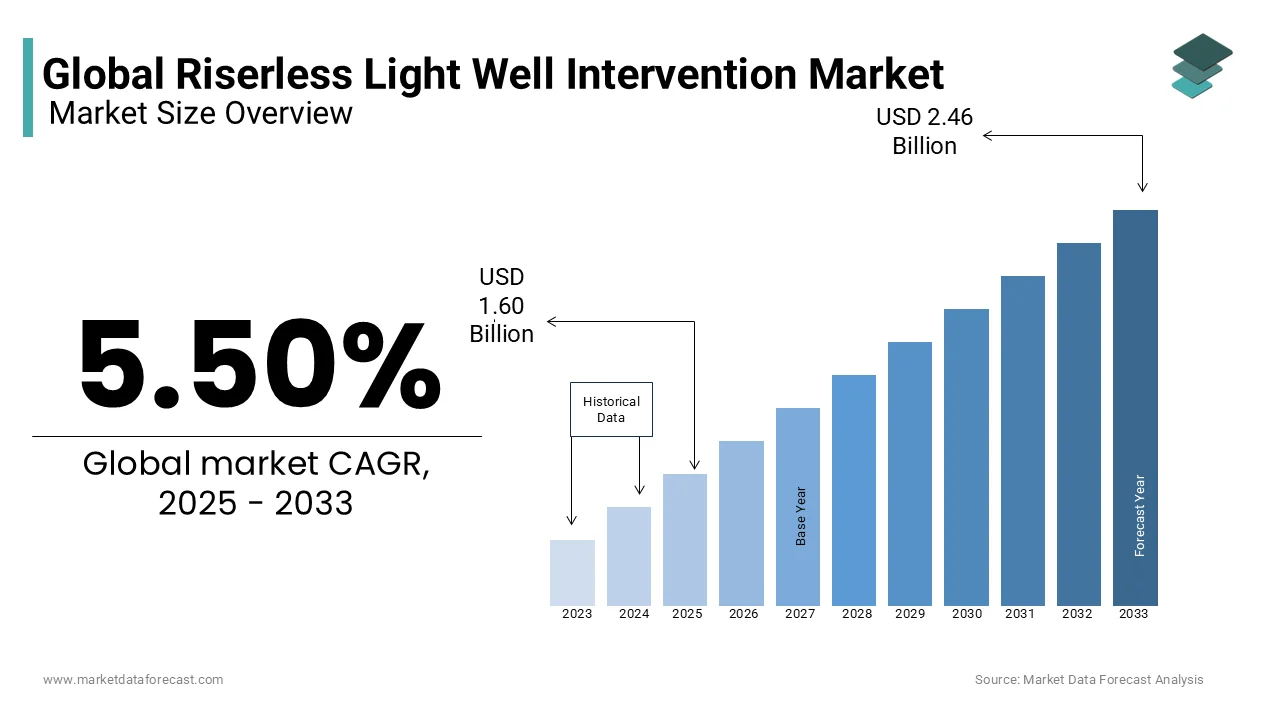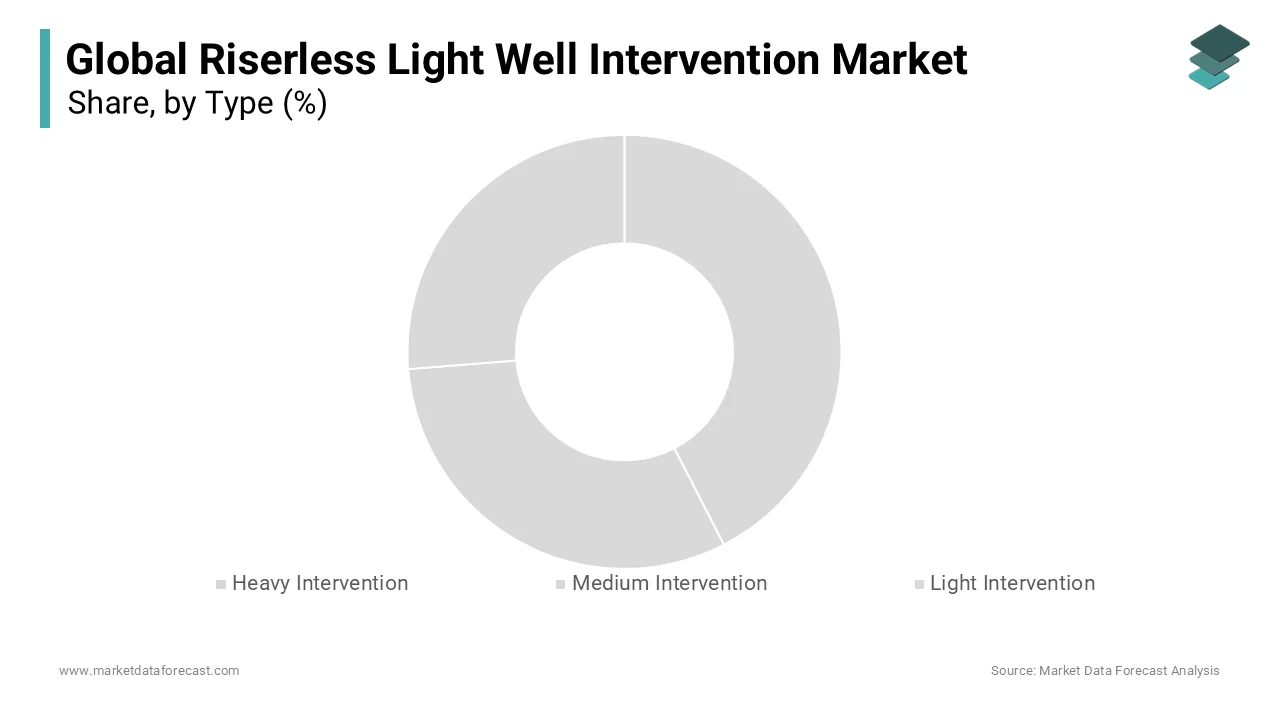Global Riserless Light Well Intervention Market Size, Share, Trends & Growth Forecast Report Segmented By Type (Heavy Intervention, Medium Intervention, and Light Intervention), By Application (Offshore and Onshore), and Region (North America, Europe, Asia Pacific, Latin America, and Middle East & Africa), Industry Analysis 2024 to 2033
Global Riserless Light Well Intervention Market Size
The size of the global riserless light well intervention market was valued at USD 1.52 billion in 2024 and is predicted to reach USD 2.46 billion by 2033 from USD 1.60 billion in 2025, registering a CAGR of 5.5% from 2025 to 2033.
The riserless light well intervention function is comparable to the latest automation. It can hardly be used in shallow water, but on the record of the dominating edge revolution in the world of technology, it can currently work both in deep and ultra-deep water. It has been taken into consideration that the recovery rate is less in subsea wells than in surface platforms owing to highly complicated well intervention and maintenance problems. To tackle the problems, a riserless light well intervention is leveraged that conducts intervention to enhance the recovery rate highly. It also assists in lowering the price of deepwater work in mature subsea fields and saves time. It is a technology that allows price-effective operations in present subsea wells like chemical treatment, repair, measurements, plug zone isolation, and scale removal, hence boosting the production of oil. riserless light well intervention operations are mainly conducted from a dynamically-positioned, purpose-built intervention vessel. riserless light well intervention system is the latest technique. In the beginning, it could function only in shallow water, but on account of cutting-edge innovations in the domain of technology, it can now work both in deep and ultra-deepwater.
MARKET DRIVERS
The riseless light well intervention market exhibits the factors that either encourage or hinder it. It also describes the leading industries in the market and analyzes their market portions, aggressive frontier, and functions. By transporting well intervention work from expensive drilling supplies to lightweight multihulls, the well intervention price is greatly reduced. To put it in a certain position, you can reduce the price by up to 60%. Then, in a supply-based sink approach function. With the rapid advancement of technology, the amount of advancement of the underwater IOR business is increasing and has strongly influenced the global riserless light well intervention market. A notable trend in the market is the continuity of contracts between service distributors and drivers. By moving well intervention work from expensive drilling rigs to lightweight monohulls, the cost of well intervention is drastically reduced. To put it in perspective, this can reduce costs by up to 60% compared to a platform-based well-access system. With the quick advancement of technology, the number of subsea IOR project advancements is escalating, and this has had a great effect on the worldwide market for riserless light well intervention. Long-term agreements between service providers and operators are a notable trend in the market.
MARKET RESTRAINTS
Therefore, the combination of new technologies with surviving technologies can be a barrier to the market. Another factor that hinders the market is the certainty that the function is a necessary complex, requiring unique technical monitoring and management at each stage.
MARKET OPPORTUNITIES
Fast enlarging rising economies on the globe, the fast steps of industrialization and urbanization, and a growing population that has worked up the requirement for power rising have given a remarkable boost to the worldwide industry for riserless light well intervention. The escalating number of advanced oil and gas areas is augmenting businesses to finance heavily in the latest investigation projects that, in sequence, are escalating the requirement for these facilities across the zone. The offshore sector holds a high industry portion owing to the increasing deep water boring and doing projects. Rising investigation and manufacturing projects and technological modernization in manufacturing projects are significant expansion factors in the driverless light well Intervention industry.
REPORT COVERAGE
|
REPORT METRIC |
DETAILS |
|
Market Size Available |
2024 to 2033 |
|
Base Year |
2024 |
|
Forecast Period |
2025 to 2033 |
|
CAGR |
5.5% |
|
Segments Covered |
By Type, Application, and Region. |
|
Various Analyses Covered |
Global, Regional, & Country Level Analysis; Segment-Level Analysis, DROC, PESTLE Analysis, Porter’s Five Forces Analysis, Competitive Landscape, Analyst Overview of Investment Opportunities. |
|
Regions Covered |
North America, Europe, APAC, Latin America, Middle East & Africa |
|
Market Leaders Profiled |
FMC Technologies, Statoil ASA, Aker Solutions, Sapura Kencana Well Services, Helix Energy Solutions Group Inc., and Others. |
SEGMENTAL ANALYSIS
By Type Insights
It helps operators track their fields' software and hardware functions to be performed in real-time and ensures the unification of subsea manufacturing functions. Industries are concentrating on introducing new advanced technologies for light well interventions. The increase in research and manufacturing projects is the main operator in the well-intervention market.
REGIONAL ANALYSIS
Europe, among all these regions, is a major region powered by Norway. Presently, there are 300 working subsea wells by Norwegian firms on the Norwegian Continental Shelf. Norwegian firms are also working in subsea fields in deep waters and in the arctic places. Currently, Norwegian operators have gotten into a long-term commitment to get a riserless light well intervention service for one provider. Europe is predicted to be the leading region in the riserless light well intervention industry. In recent times, there have been 300 functioning subsea wells by Norwegian businesses on the Norwegian worldwide shelf. To build the function more essential, they are encouraging the latest technologies like more arrangement functions, compound cords, advanced well-managing functions, and curved tubes from light ships.

North America is known to have the largest share of the industry in 2020, owing to the average rise in oil manufacturing and stable exploration and production works. The leading oil and gas firms are in North America, mainly in the U.S. Moreover, the Asia Pacific market is predicted to increase at the biggest step in the upcoming year owing to the presence of the highest oil and gas utilization economies. Businesses in the Asia Pacific are also focusing on shaping associations to enlarge their industry and finances.
KEY MARKET PARTICIPANTS
Companies playing a prominent role in the global riserless light well intervention market include FMC Technologies, Statoil ASA, Aker Solutions, Sapura Kencana Well Services and Helix Energy Solutions Group Inc.
RECENT HAPPENINGS IN THE MARKET
- Presentation of the intervention pile for skylight without a riser, and subsea production monitoring systems. FMC Technologies will showcase its latest lightweight well response stack and hardware and software systems to help operators monitor their field operations in real time and ensure the integrity of subsea production systems.
MARKET SEGMENTATION
This research report on the global riserless light well intervention market has been segmented and sub-segmented based on type, application, and region.
By Type
- Heavy Intervention
- Medium Intervention
- Light Intervention
By Application
- Offshore
- Onshore
By Region
- North America
- Europe
- Asia Pacific
- Latin America
- Middle East & Africa
Frequently Asked Questions
What are the main applications of RLWI globally?
Globally, RLWI is primarily used for well maintenance, production enhancement, plug and abandonment (P&A) operations, and the installation of well completions. These services help extend the life of subsea wells and optimize production without the need for rigs.
What are the environmental benefits of RLWI operations?
RLWI operations have a smaller environmental footprint than traditional methods due to reduced equipment size and fuel consumption. They also minimize disturbance to marine ecosystems by eliminating the need for heavy rigs and associated infrastructure.
How is technological innovation shaping the RLWI market?
Innovations like advanced subsea intervention systems, remotely operated vehicles (ROVs), and AI-driven diagnostics are enhancing RLWI efficiency. These advancements enable more precise interventions, reduce operational time, and expand the scope of applications.
How does RLWI contribute to offshore oilfield profitability?
By providing cost-effective and efficient solutions for well maintenance and intervention, RLWI enhances the productivity and lifespan of offshore oilfields. This reduces downtime and operational costs, making it a critical tool for maximizing profitability in the offshore oil and gas sector.
Related Reports
Access the study in MULTIPLE FORMATS
Purchase options starting from $ 2500
Didn’t find what you’re looking for?
TALK TO OUR ANALYST TEAM
Need something within your budget?
NO WORRIES! WE GOT YOU COVERED!
Call us on: +1 888 702 9696 (U.S Toll Free)
Write to us: [email protected]

